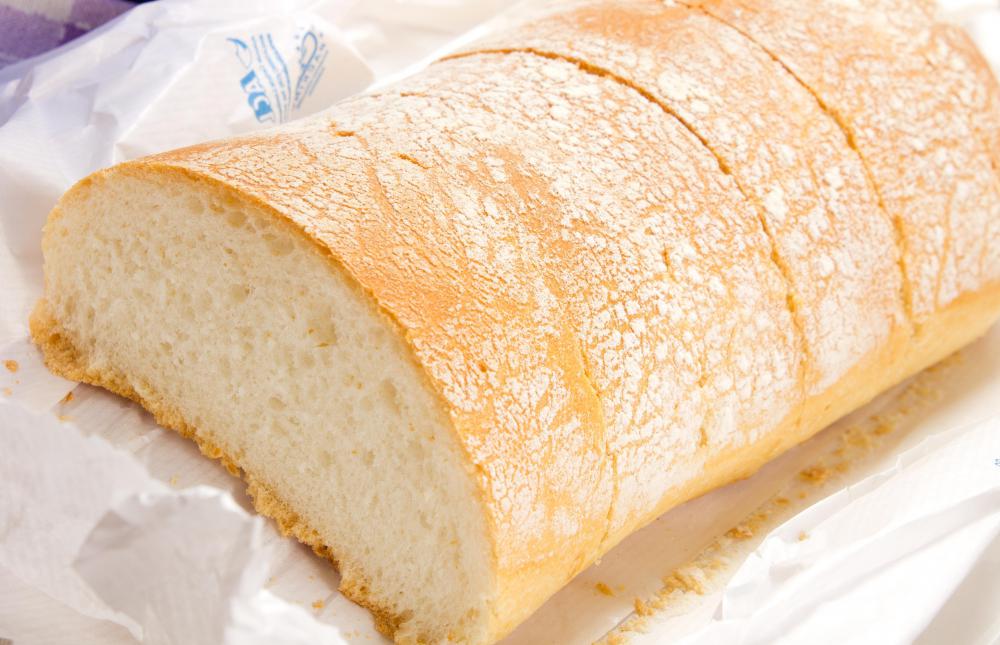At DelightedCooking, we're committed to delivering accurate, trustworthy information. Our expert-authored content is rigorously fact-checked and sourced from credible authorities. Discover how we uphold the highest standards in providing you with reliable knowledge.
What is Salt-Rising Bread?
Salt-rising bread is a specific type of bread that does not use yeast, and instead uses another source of bacteria to create the gases that allow bread dough to rise. This other source of bacteria for rising is typically something like cornmeal, flour, oatmeal, or barley, though much more unusual ingredients such as blue cheese and cheddar cheese have been used with success. The resulting bread is somewhat different from more common yeast-rising bread, and it produces a signature smell during formation of the starter that people who have enjoyed the bread come to recognize. Salt-rising bread can be made fairly easily, though the process does typically require proper adherence to instructions to ensure a quality result.
Many types of bread, such as sourdough, require a starter to be added to the flour and other ingredients to create dough that is then able to rise properly. The starter is usually made using yeast, and it allows for the creation of gases that cause dough to rise. Yeast-rising breads typically use sugar with the yeast. It effectively eats the sugar and then releases gases to make the bread rise. A salt-rising bread starter does not include yeast, however, and instead uses a bacterium called Clostridium perfringens to create the gases that will allow the dough to rise.

The starter for salt-rising bread typically contains a liquid, usually water or milk, some flour or wheat gluten, salt, and something like cornmeal or oatmeal. Salt in the starter actually acts to ensure that yeast does not activate in the starter. This allows the bacteria in the cornmeal, oatmeal, flour, and anything else used to properly cultivate and begin producing gases. Part of a Campden tablet, often used to kill types of bacteria during wine making, can also be used to keep yeast dormant.

The starter will usually have to be kept at a fairly stable temperature of around 105° F (about 40.5° C) for at least 12 hours, and potentially as long as 24 hours. This time allows the bacteria to thrive and produce gases, and the temperature must be stable for this to happen effectively. During this time the starter also produces an odor different from yeast fermentation and is fairly unique to salt-rising bread starters.

Once the starter is prepared, it typically appears like a yeast starter with a foam layer on the top. It can be added to flour, sugar, water, and other ingredients to form the dough. Different recipes then allow the salt-rising bread to rise for different times and at different temperatures, but the process is fairly similar to other types of breads. The bacterium used in salt-rising bread, Clostridium perfringens can be found in a number of different foods, from oat and cornmeals to cheddar cheese, so a number of possible substitutions can be considered when creating the starter for this bread.
AS FEATURED ON:
AS FEATURED ON:















Discussion Comments
Who ever said that salt rising bread doesn't need yeast to make it rise really doesn't know how to make real salt rising bread. Of course, it needs yeast, if you want to make real salt rising bread. I guess you have to be a baker, though. if you want to know how to make the real thing, just let me know
Post your comments